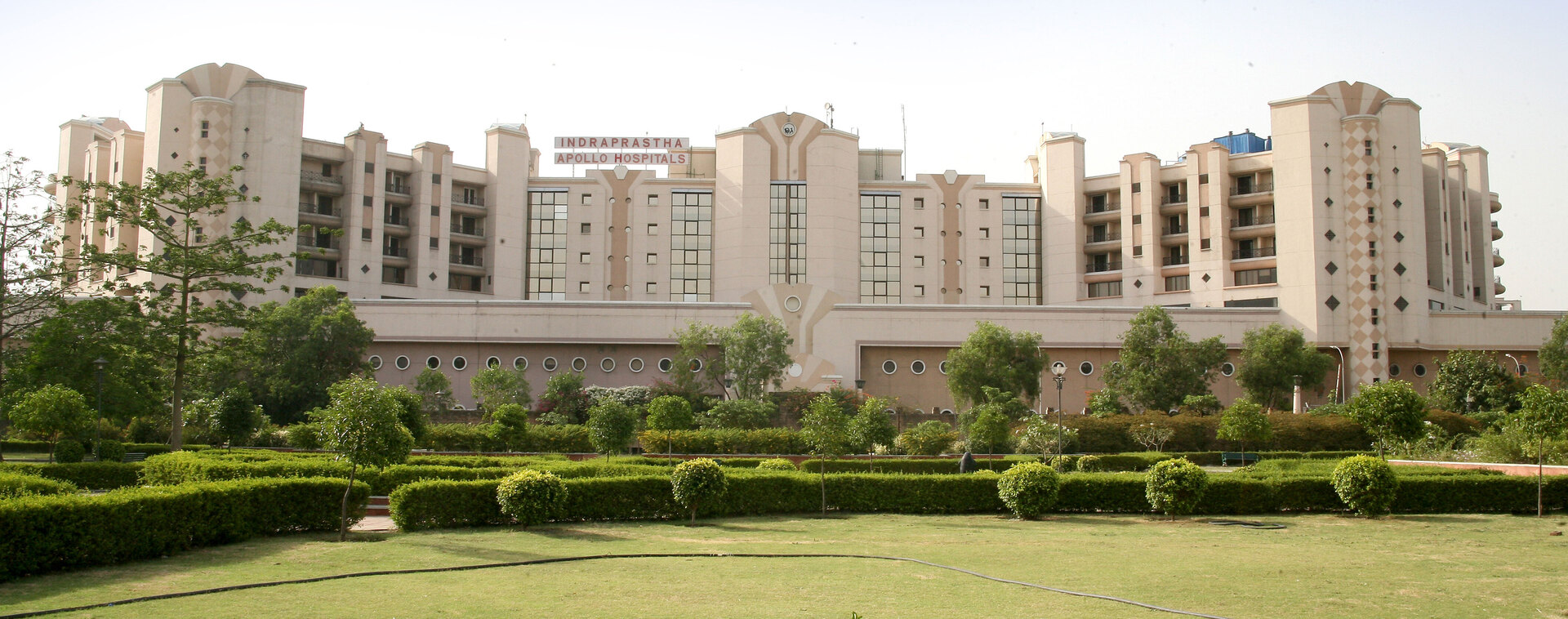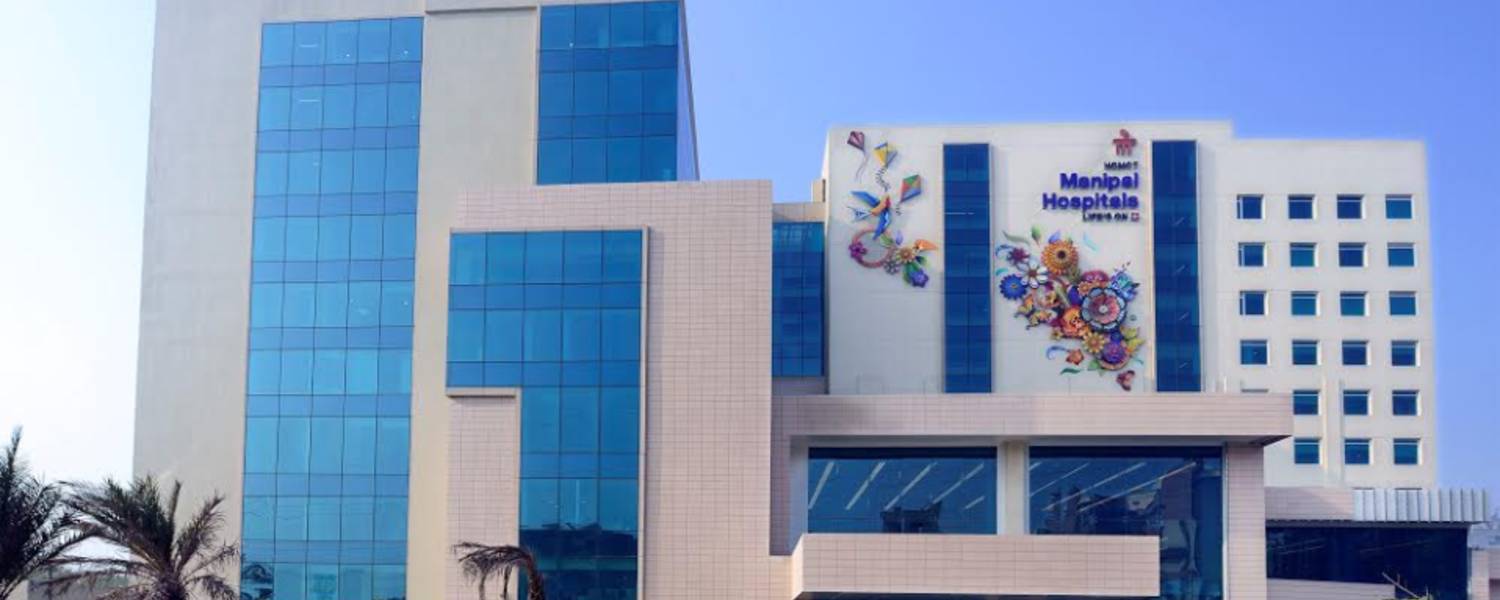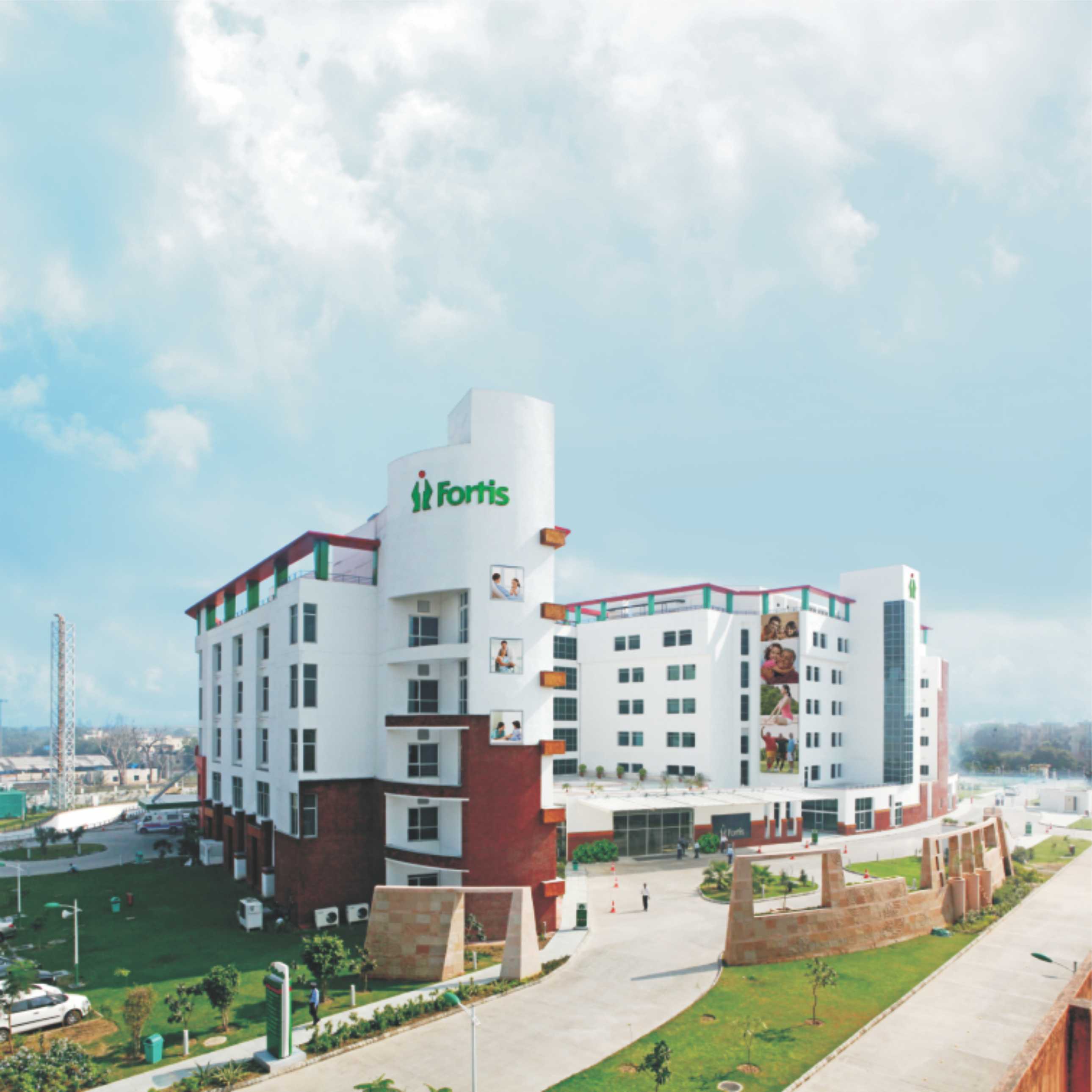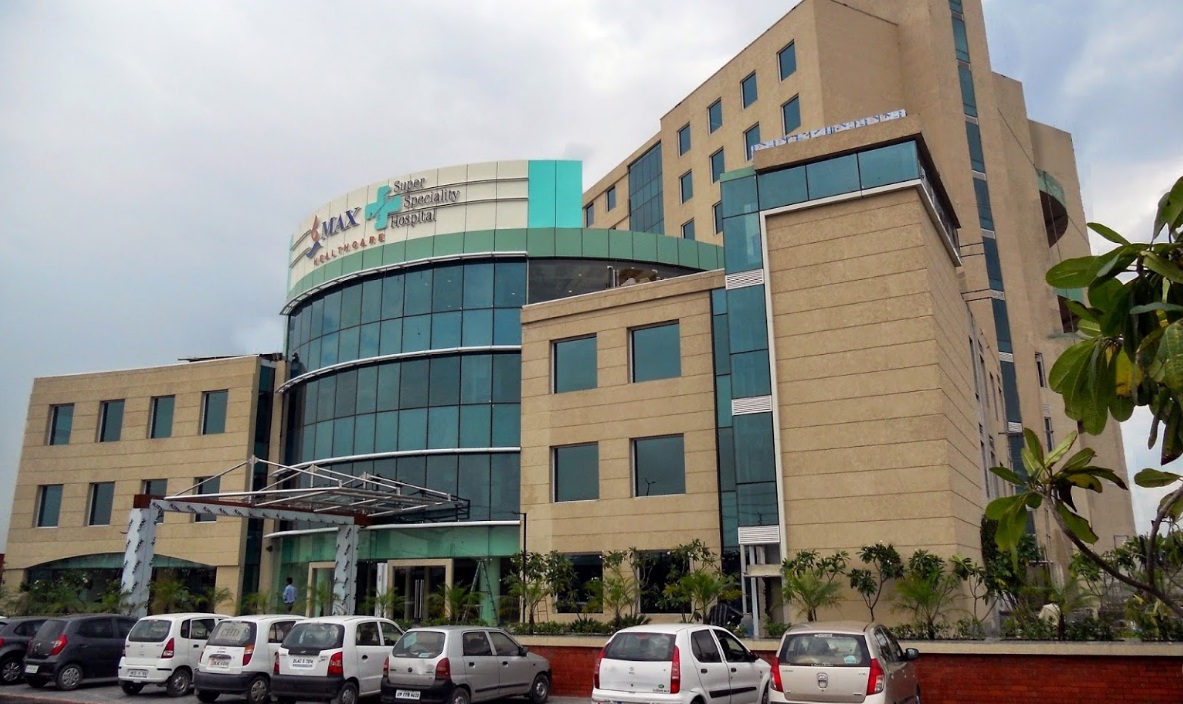Top 10 Best Family medicine Hospitals In Delhi NCR

Hospitals are medical facility that provides patient care using specialized health science, auxiliary healthcare professionals, and medical equipment. The most common type of hospital is the general hospital, which often contains an emergency room to address urgent health problems ranging from fire and accident victims to unexpected diseases.
A district hospital is usually the largest health care centre in its region, with many intensive care beds and additional beds for patients requiring long-term care. Trauma centres, rehabilitation hospitals, children’s hospitals, senior (geriatric) hospitals, and institutions dealing with specific medical requirements such as mental care (see psychiatric hospital) and disease categories are specialized hospitals.
When compared to standard hospitals, specialized hospitals can help lower healthcare expenses. Depending on the sources of income, hospitals are categorized as general, speciality, or government.
A teaching hospital integrates patient care with instruction for health science and auxiliary healthcare students. A clinic is a health science facility that is smaller than a hospital. Hospitals have a variety of departments (for example, surgery and urgent care) as well as speciality units such as cardiology.
Some hospitals have some departments, while others have chronic care units. A pharmacy, pathology, and radiology are examples of standard support units.
Hospitals are often supported by public funds, for-profit or nonprofit health organizations, health insurance companies, or charities, including direct philanthropic donations. Historically, religious groups or benevolent individuals and leaders frequently founded and sponsored hospitals.
Hospitals are now staffed mainly by professional physicians, surgeons, nurses, and allied health practitioners. However, in the past, this labour was typically handled by members of founding religious orders or volunteers.
However, several Catholic religious orders, such as the Alexians and the Bon Secours Sisters, continue to focus on the hospital ministry in the late 1990s, as do several other Christian faiths, such as the Methodists and Lutherans.
In addition, hospitals were original “places of hospitality,” still kept in the names of several institutions, such as the Royal Hospital Chelsea, founded in 1681 as a retirement and nursing home for veteran soldiers.
Etymology
A white H on a blue backdrop is used to signify hospitals in the United States. During the day, hospitals can be identified by a variety of emblems. In the United States, for example, a white ‘H’ on a blue background is commonly utilized. By the Geneva Conventions, a hospital may be marked with the red cross, red crescent, or red crystal during times of armed conflict.
Hospitals in the Middle Ages provided different services from current institutions, such as almshouses for the needy, pilgrim hostels, or hospital schools. The term “hospital” derives from the Latin hospes, which means “alien” or “foreigner,” and so “guest.” Another term derived from this was the hospital, which came to signify hospitality, or the relationship between a guest and a sheltered, as well as hospitality, friendliness, and hospitable greeting.
The Latin word then came to imply a guest-chamber, guest’s lodge, or an inn through metonymy. Thus, the source of the English words host (where the p was eliminated for ease of pronunciation), hospitality, hospice, hostel, and the hotel is Hospes. The latter contemporary word stems from Latin via the Old French romance word hostel, which evolved into a silent s that was eventually eliminated from the word and is represented
Types
Some patients visit a hospital for diagnosis, treatment, or therapy and then leave (“outpatients”), whilst others are “admitted” and stay overnight or for several days, weeks, or months (“inpatients”). Hospitals are separated from other types of medical facilities by their ability to admit and care for inpatients, whereas clinics are generally used to characterize smaller medical institutions.
Acute and general care
The term “general hospital” redirects here. General Hospital is an American soap opera.
The general hospital, often known as an acute-care hospital, is the most well-known form of the hospital.
These hospitals treat a wide range of diseases and injuries. Most have an emergency department (sometimes known as “accident & emergency”) or trauma centre to cope with life-threatening situations.
Larger cities may have several hospitals of various sizes and facilities. In addition, some hospitals have ambulance services, particularly in the United States and Canada.
A district hospital is often the largest health care centre in its region, with intensive care, critical care, and long-term care beds.
In California, a “district hospital” is a type of healthcare facility established shortly after World War II to solve the scarcity of hospital beds in many local areas.
Even today, district hospitals remain the only public hospitals in 19 of California’s counties and the only locally accessible hospital in nine more counties where one or more other hospitals are located significantly from a local community.
District hospitals account for 28 of California’s rural hospitals and 20 critical-access hospitals. They are founded by local governments, have boards chosen by their constituents, and exist to meet local needs.
They are a significant source of healthcare for uninsured and Medi-Cal patients (California’s Medicaid program serves low-income people, some seniors, people with disabilities, children in foster care, and pregnant women). In California, district hospitals supplied $54 million in uncompensated care in 2012.
Specialized
Starship Children’s Health is an Auckland, New Zealand-based children’s hospital.
A speciality hospital is dedicated solely to one or a few related medical specialties.
Rehabilitation hospitals, children’s hospitals, seniors’ (geriatric) hospitals, long-term acute care facilities, and hospitals for specific medical needs such as psychiatric problems (see psychiatric hospital), specific disease categories such as cardiac, oncology, or orthopaedic problems, and so on are all subtypes.
Fachkrankenhäuser are specialized hospitals in Germany; one example is Fachkrankenhaus Coswig (thoracic surgery). In India, specialist hospitals are known as super-speciality hospitals, as opposed to multispecialty hospitals, which include numerous disciplines.
When compared to regular hospitals, specialized hospitals can help lower healthcare expenses. For example, Narayana Health’s cardiac centre in Bangalore specializes in cardiac surgery and can accommodate a substantially more significant number of patients. It has 3,000 beds and performs 3,000 paediatric cardiac surgeries every year, the most of any facility in the world.
Because surgeons are paid on a fixed salary rather than per treatment, the hospital can take advantage of economies of scale and reduce its cost per procedure as the number of procedures increases. Working on a single procedure, such as a production line, can help each specialist become more efficient.
Teaching
A teaching hospital provides care to patients while also training future medical professionals such as medical students and student nurses. It could be affiliated with a medical school or a nursing school and be active in medical research. In addition, students may witness clinical activity in the hospital.
Clinics generally solely provide outpatient treatments. However, some may have a few inpatient beds and a restricted variety of services typically offered in hospitals.
Wards or departments
A hospital has one or more wards that accommodate inpatient hospital beds. It may also have emergency services, an operating theatre, an intensive care unit, and a variety of medical speciality departments.
For example, a trauma centre is a well-equipped hospital. Other services such as a hospital pharmacy, radiography, pathology, and medical laboratories may be available. Outpatient departments in some hospitals include behavioural health care, dentistry, and rehabilitation services.
A hospital may also have a nursing department led by a chief nursing officer or director of nursing. This department is in charge of managing the hospital’s professional nursing practice, research, and policy.
Many units have a nursing and a medical director who function as administrators for their respective fields. A medical director, for example, is in charge of physicians and medical treatment in an intensive care nursery. In contrast, the nursing manager oversees all nurses and nursing care.
Examples of support units include a medical records department, a release of information department, technological support, clinical engineering, facilities management, plant operations, dining services, and security departments.
Remote surveillance
The COVID-19 pandemic prompted the establishment of virtual wards throughout the British National Health Service. Patients are handled at home, with oxygen saturation probes used to monitor their levels if necessary and telephone help.
Between March and June 2020, West Hertfordshire Hospitals NHS Trust managed over 1200 patients at home and is expected to maintain the system following COVID-19, initially for respiratory patients. In April 2020, Mersey Care NHS Foundation Trust launched a COVID Oximetry@Home service.
This allows them to monitor over 5000 patients in their homes every day. Nurses, caregivers, and patients can use the technology to record and monitor vital signs such as blood oxygen levels.
History
Also, see Ancient Egyptian medicine, Ancient Greek medicine, Medicine in Ancient Rome, and Medical Community of Ancient Rome.
View of the Askleipion of Kos, the best surviving Askleipieion. Fa Xian, a Chinese Buddhist monk who travelled across India around AD 400, documented examples of healing facilities.
According to the Mahavamsa, a sixth-century AD chronicle of Sinhalese history, King Pandukabhaya of Sri Lanka (r. 437-367 BC) had lying-in-homes and hospitals (Sivikasotthi-Sala).
Gundeshapur, an essential city in the southwest of the Sassanid Persian Empire, built-in AD 271 by Shapur I, also had a hospital and medical training centre. [19] Temples dedicated to the healer-god Asclepius, known as Asclepeion, served as medical advising, diagnosis, and healing centres in ancient Greece.
The Roman Empire adopted the Asclepeia. While public healthcare was non-existent in the Roman Empire, military hospitals known as valetudinarians existed in military barracks and served soldiers and slaves within the fort.
There is evidence that some civilian hospitals, while unavailable to the Roman public, were occasionally privately built for that family in extraordinarily affluent Roman residences in the countryside. However, this practice appears to have halted in 80 AD.
The Roman Empire’s acceptance of Christianity as a religion prompted an increase in care services. Following the First Council of Nicaea in AD 325, construction of a hospital in each cathedral town, with Saint Sampson in Constantinople and Basil, bishop of Caesarea in modern-day Turkey, among the earliest hospitals.
By the twelfth century, Constantinople had two well-organized hospitals staffed by male and female doctors. Systematic treatment processes and specialized wards for specific disorders were available.
The Qalawun complex in Cairo, Egypt, housed the renowned Mansuri hospital. Harun Al-Rashid built the first general hospital in the Islamic world in Baghdad in 805 AD.
By the 10th century, Baghdad had five more hospitals, while Damascus had six hospitals by the 15th century, and Córdoba alone had 50 significant hospitals, many solely for the military.
The Islamic bimaristan was a medical centre, nursing home, and lunatic institution. It typically treated the impoverished the same way the wealthy would have been treated in their own houses. Hospitals in this era were the first to demand medical diplomas to license doctors, and compensation could be made for carelessness.
It was against the law for hospitals to turn away patients who could not pay. These hospitals were sponsored financially by waqfs and public monies. Europe in the early modern and Enlightenment periods
In sixteenth-century France, a hospital ward.
During the sixteenth and seventeenth centuries in Europe, the medieval concept of Christian care transformed into a secular one. For example, in England, following King Henry VIII’s dissolution of the monasteries in 1540, the church abruptly ceased to be a supporter of hospitals, and the hospitals’ St Bartholomew’s, St Thomas’s, and St Mary of Bethlehem’s (Bedlam) were endowed directly by the crown; this was the first instance of secular support being provided for medical institutions.
Guy’s Hospital in London, one of the first voluntary hospitals established in 1724, was engraved in 1820.
Ruins of the Hospital San Nicolás de Bari in Santo Domingo, Dominican Republic, designated by UNESCO as the Americas’ oldest hospital.
Pennsylvania Medical Center (now part of the University of Pennsylvania Health System). It was the first public hospital in the United States, established in 1751. It also has America’s first surgical amphitheatre and medical library.
The voluntary hospital movement began in the early 18th century, with hospitals opening in London by the 1720s, notably Westminster Hospital (1719), promoted by the private bank C. Hoare & Co, and Guy’s Hospital (1724), funded by the wealthy merchant Thomas Guy’s gift.
Over the century, new hospitals sprang constructed in London and other British towns, many of which were funded by private subscriptions. From 1730 to 1759, St Bartholomew’s Church in London was reconstructed, and the London Hospital, Whitechapel, opened in 1752.
These hospitals marked a turning point in the institution’s function; they began to grow from being essential places of care for the sick to being centres of medical innovation and discovery, as well as the primary location for the education and training of future practitioners. Some of the best surgeons and doctors worked and passed on their knowledge in hospitals.
They also evolved from simple shelters to complicated institutions that provide medicine and care for the sick. In response to a plague epidemic, King Frederick I of Prussia established the Charité in Berlin in 1710.
The notion of voluntary hospitals expanded to Colonial America as well; the Bellevue Hospital started in 1736 (first as a workhouse, then as a hospital); the Pennsylvania Hospital opened in 1752, and the New York Hospital in 1771, and the Massachusetts General Hospital in 1811.
When the Vienna General Hospital opened in 1784, it quickly became the world’s largest hospital, providing physicians with a new facility that grew into one of the most important research centres.
Another Enlightenment-era charity invention was the dispensary, which provided free medications to the impoverished. The London Dispensary was the first of its kind in the British Empire, opening its doors in 1696.
However, the concept took a while to catch on until the 1770s, when numerous such organizations sprouted out, notably the Public Dispensary of Edinburgh (1776), the Metropolitan Dispensary and Charitable Fund (1779), and the Finsbury Dispensary (1780). (1780). In addition, dispensaries were established in New York in 1771, Philadelphia in 1786, and Boston in 1796.
Let’s talk about the Top 10 Best Family medicine Hospitals In Delhi NCR

- Indraprastha Apollo Hospital, New Delhi
Established: 1996
Beds: 1000
Multi-speciality
About Indraprastha Apollo Hospital, New Delhi
- Founded in 1996,
- Indraprastha Apollo Hospital is NABL and JCI accredited.
- The Apollo Group provides 10,000 beds in 64 hospitals, more than 2,200 pharmacies, 100 primary care and diagnostic clinics, and 115 telemedicine units in 9 countries. Indraprastha Apollo Hospital has 52 speciality hospitals under one roof.
- The main areas of expertise in the hospital are anaesthesia, cardiology, cardiac surgery, cancer, paediatrics, critical care, emergency medicine, fetal medicine, gastrointestinal and liver disease, obstetrics and gynaecology, intervention radiology, IVF, and liver.
- And kidney transplantation, nuclear medicine, nephrology, neuroscience, ophthalmology, orthopaedics, otolaryngology (ENT), paediatrics, pediatric surgery, psychiatry and clinical psychology, plastic and reconstructive surgery, ventilation and sleep medicine, rheumatism, spine Surgery, urology and andrology, as well as vascular and intravascular surgery.
- The first hospital in India to have a pediatric liver transplant was in 1998. The hospital was ranked number one in the Times of India Healthcare Survey 2016 in Neuroscience, Kidney Science, Oncology, Pediatrics, Gynecology, Obstetrics and Emergency Medicine.
- It was also ranked as the 6th best private hospital in India for cardiology in the 2013 Best Hospital Survey and classified under the guidance of ACNielsen. A special award for the Golden Peacock Environmental Management Award for hospital environmental practices by a jury chaired by Judge P.N. Bhagwati and the former Chief Justice of India.

2. Fortis Escorts Heart Institute, New Delhi
Established: 1988
Number of Beds: 285
Multi-speciality,
About Fortis Escorts Heart Institute, New Delhi - The largest private cardiac hospital in the Asia Pacific region, Fortis Escorts Heart Institute, was established in 1988 and is JCI accredited. It is one of the bestest hospitals for Cardiac care for adults and children that celebrated 25 years of Cardiac excellence in 2013.
- Awarded as the winner of the ‘Best Institution Award’ by Delhi Medical Association(2013), ‘Best Heart Care Centre in North India’ at the global Healthcare and the Excellence Awards 2013 and ‘Best Single Specialty Hospital – Cardiology’ at India Healthcare Awards 2012.
![]()
3. Indian Spinal Injuries Center, New Delhi
Established in: 1997
Number of Beds: 145
Multi-speciality
About Indian Spinal Injuries Center, New Delhi
- NABH and NABL accredited Indian Spinal Injuries Center is the most advanced Spine, Orthopaedic, Neuromuscular, and Arthroscopic Surgical Center in India. It attends over 200,000 patients across 55 countries every year. We provide quality treatment at an affordable price.
- Specializes in spine surgery, orthopaedics, rheumatology, neurology, rehabilitation, urology, and plastic surgery. Founded in 1997, the hospital’s motto is “Patients for Patients”, providing everything a spinal cord injury patient needs to recover.
- The Italian government has invested $ 10 million in the project through San Raffaelle Hospital in Milan under the vision of Major HPS Ahluwalia, the hospital’s director. This is the most significant Italian collaboration ever in the domestic medical sector.

4. Max Super Specialty Hospital, Saket, New Delhi
Established: 1989
Beds: 252
Super Specialty,
About Max Super Specialty Hospital, Saket, New Delhi
- Saket’s Max Super Specialty Hospital was founded in 2006
- The FICCI Healthcare Excellence Awards recognize initiatives to improve the customer experience and patient safety. Express Healthcare Awards for Healthcare Excellence
D L Shah National Award for “Economics of Quality” from the Quality Council of India
Received the first Global Green OT certification - Specializes in cardiac surgery, cosmetic and reconstructive surgery, cancer treatment, orthopaedics, paediatrics, mental health and behavioural science, endocrine science, ENT, neuroscience, ophthalmology, internal medicine, and minimal access surgery.
- Speciality clinics are Women’s Heart Clinic, Headache Clinic, Movement Disorder Clinic, Multiple Sclerosis Clinic, Geriatric Neurology Clinic, Cardiac Pacemaker Clinic, Arrhythmia and Electrophysiology Clinic.
- NABH & NABL certified super speciality hospital.

5. Sir Gangaram Hospital, New Delhi
Established: 1951
Beds: 675
multi-speciality,
About Sir Gangaram Hospital, New Delhi
- It has been consistently voted among the best hospitals in India. Founded in 1951, Gangaram Hospital has provided excellent medical care for over 60 years. State-of-the-art general speciality hospital.
- The prestigious ISO 9001: 2000, ISO 14001: 2004, OHSAS 18001: 1999, ISO 15189: 2007, NABH and NABL.

6. BLK Super Specialty Hospital, New Delhi
Established: 1959
Beds: 650
Super Specialty,
About BLK Super Specialty Hospital
- A prominent obstetrician and gynaecologist doctor. BL Kapoor founded BLK Super Specialty Hospital in 1959. It was inaugurated by the then Prime Minister of India, Pandit Jawaharlal Nehru. Super-speciality hospitals are both NABH and NABL accredited.
- It has almost 17 modern and well-equipped modular operating rooms that can accommodate 650 beds. BLK Super Specialty Hospital is the first NCR region to install and use an automatic pneumatic tube system to improve healthcare delivery.
- One of the most significant critical care programs, with 125 beds in various intensive care units in the medical, surgical, cardiac, pediatric, neonatal, neuroscience and organ transplant departments.

7. Manipal Hospitals Dwarka, Delhi
Established: 1970
Beds: 380
Super Specialty
About Manipal Hospitals Dwarka, Delhi
- Manipal Hospitals Dwarka is a super-specialized hospital with seamless integration and paperless services. It is part of the Manipal Hospital Group, founded in 1953 as the Custarva Medical College in Manipal, Karnataka, and is the third-largest founding company in India.
- This group has more than ten corporate hospitals, five teaching hospitals and more than 5900 beds. Manipal Hospital as an entity was established in 1991 with the opening of Bangalore Hospital. Currently, this group has 15 hospitals in India and a hospital in Malaysia.
- This Group is India’s leading healthcare network, treating more than 2 million patients in 15 hospitals annually. It features technological advances such as telemedicine, automated pneumatic chute systems, artificial intelligence, remote monitoring, extended thinking, virtual reality, and EMR.
- The group has won many awards, including the 2011 Frost & Sullivan Healthcare Excellence Awards and Asian HR Leadership. 2013 Awards – Asian Training and Development Excellence Awards 2014 Golden Peacock National Training Awards 2014 in Institutional Building and Diversity and Human Resources Development.

8. Fortis Hospital, Shalimar Bagh, New Delhi
Established: 2010
Beds: 262
Multi-speciality
- Fortis Hospital, Shalimar Bagh is a multi-speciality hospital that provides super-speciality within the department whose mission is to provide quality medical care. Opened in 2010, the hospital is one of the largest hospitals in the Fortis Group.
- Fortis Hospital, Shalimar Bagh, strives to be a quality and patient-focused champion and is a NABH accredited hospital.
- The Federation of Indian Chambers of Commerce and Industry (FICCI) received the FICCI HEAL 2014 Award, recognizing hospital excellence in branding, marketing and image building.
- They have the best state-of-the-art emergency response and offer innovative, best-in-class solutions.
- Hospitals’ valuable facilities for patient visitors include coffee shops, multinational restaurants, money changers, children’s playgrounds, daycare centres, ICU waiting lounges, Wi-Fi internet, prayer rooms, ATMs, etc.
- Pharmacy and blood bank. The hospital has a capacity of 262 beds and has a 24-hour emergency and accidental trauma treatment facility.
- The Fortis Hospital building has received a 3-star rating from the Government of India’s Energy Efficiency Department under the Ministry of Energy, making it the only hospital in Delhi to receive such a rating.

9. Dharamshila Narayana Super Specialty Hospital, New Delhi
Established: 1994
Beds: 300
Sole Specialist,
About Dharamshila Narayana Super speciality Hospital
- Specializing in cancer treatment was founded in 1994. India’s first cancer hospital was certified by NABH and NABL in 2008 and 2010, respectively. Excellent cancer treatment with depleted haplotype-matched (half-pair) bone marrow transplants performed on CliniMACS-based TCRs and specially designed BMT units.
- The first cancer hospital in India was ISO 9001: 2008 and ISO 14001: 2004 certified by TÜV-NORD Germany in 2002 to implement an integrated quality and environmental management system.
- The National Board of Examiners (NBE) first presented hospitals with accreditation for the Diplomat National Board (DNB) Medical and Surgical Oncology Program in 2001 and 2004.
- It is the first and eleventh hospital worldwide to perform a haplotype-matched bone marrow transplant for an adult patient with sickle cell disease. It is the only cancer hospital in North India with the most demanding head and neck surgery, with results comparable to those of European cancer laboratories.
- The Kidney Center is equipped with state-of-the-art computerized bicarbonate hemodialysis equipment, back-penetration systems, electrocardiograms, heart monitors and other state-of-the-art equipment to ensure patient safety.

10. Max Super Specialty Hospital, Shalimar Bagh, New Delhi
Established: 2011
Super Specialty
About Max Super Specialty Hospital, Shalimar Bagh, New Delhi
- It was established in 2011. MaxHealthcare is the first hospital in India to receive Stage 6 certification from HIMSS.
- Specializes in cardiac science, neuroscience, minimal access surgery for metabolism and obesity, trauma and critical care, orthopaedics and joint replacement.
- Received the first Global Green OT certification
- NABH and NABL certified super-specialized facility.
edited and proofread by nikita sharma




